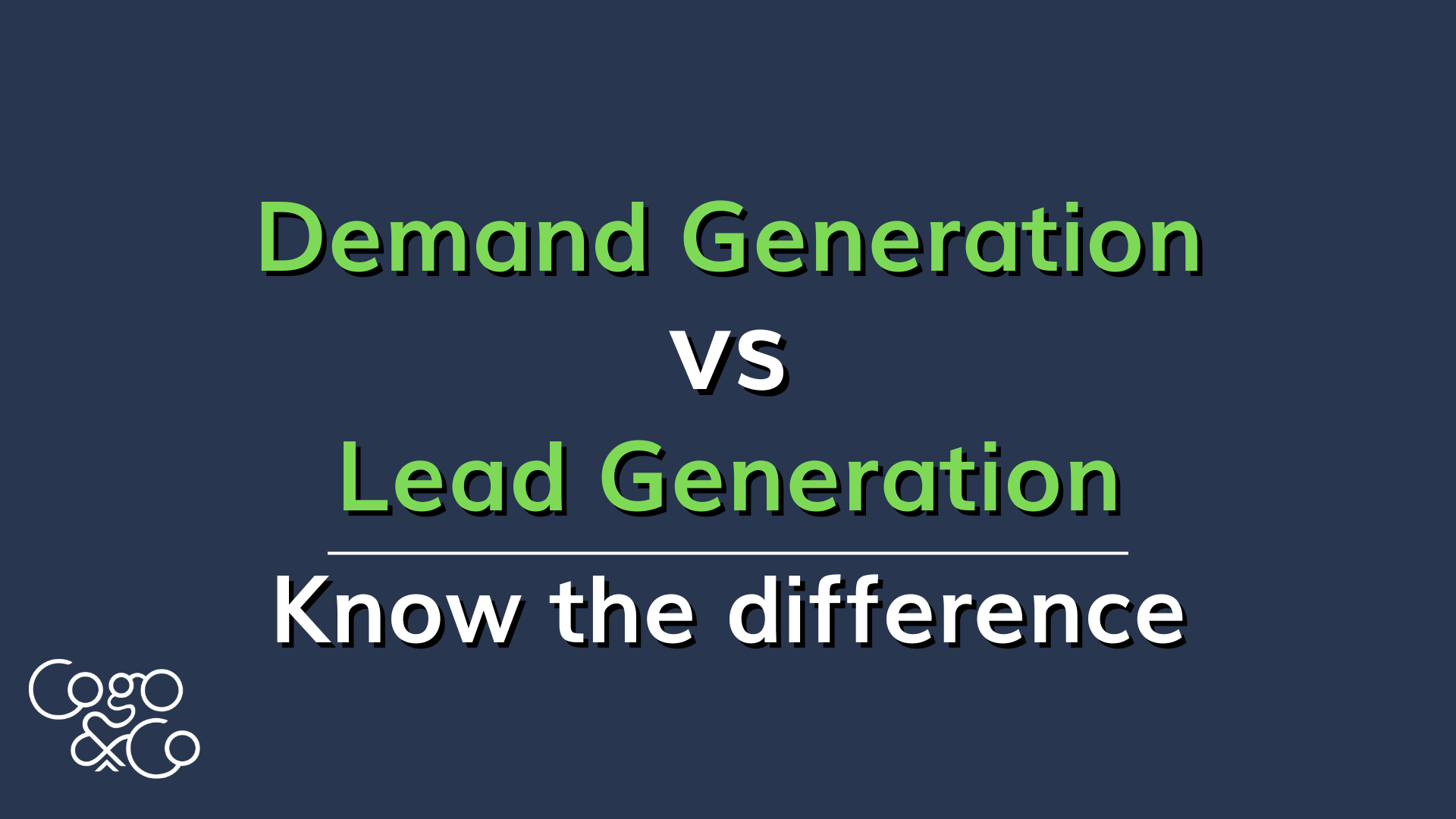
Around 37 percent of marketers believe that obtaining high-quality leads is one of their biggest challenges. When you're trying to build your customer base, finding an audience can sometimes feel like a challenge.
That's why understanding demand generation vs. lead generation can help. Do you know the difference?
Keep reading to learn about the differences and about how implementing these strategies together can set you up for success.
.jpg)
What Is Demand Generation?
Demand generation is all about building buzz about your product.
At its core, demand generation aims to generate curiosity. The goal is to capture the attention of prospects who may not be actively searching for a solution yet. It involves strategic marketing activities that aim to do the following:
- Educate
- Entertain
- Engage
One key aspect of demand generation is content creation. Creating content that's valuable and addresses your audience's needs can help position you as an authority. Some content you can create includes:
- Blog posts
- Videos
- eBooks
- Webinars
- Social media campaigns
Another important component of demand generation is brand awareness. Through consistent messaging across various channels, you can establish brand recognition. You can also begin to build trust with your target audience.
What Is Lead Generation?
Lead generation is another crucial process in marketing. It focuses on capturing the interest and contact information of potential customers.
To do this, various strategies and tactics get used. These are aimed at attracting individuals who have shown some level of interest or intent in a product or service.
One common method used for lead generation is through content marketing. By creating valuable and informative content, you can attract prospects to their website or landing page. This encourages them to provide their contact details in exchange for access to the content.
Additionally, lead generation often involves utilizing email marketing campaigns. This allows businesses to reach out directly to potential leads.
Lead generation aims to build a database of qualified leads that can be nurtured over time into paying customers.
Demand Generation vs. Lead Generation: What's the Biggest Difference?
Demand generation and lead generation are two key strategies used to attract and convert customers. While they may seem similar, there are some crucial differences between the two.
Demand generation focuses on creating awareness and interest in a product or service among a broader audience. It aims to educate and engage potential customers at every stage of their buyer's journey. This strategy involves various tactics such as:
- Content marketing
- Social media campaigns
- Webinars
- Events
On the other hand, lead generation is about capturing specific information from potential customers. These are people who have shown interest in your product or service.
The goal here is to collect contact details that can be used for targeted marketing efforts like email campaigns or sales calls. Lead generation techniques include the following:
- Gated content
- Landing pages with lead capture forms
- Quizzes
- Surveys
- And more
The biggest difference between demand generation and lead generation lies in their focus. Demand gen targets a wider audience, while lead gen hones in on individuals who have already expressed interest.
How Do Demand Generation and Lead Generation Influence Each Other?
Demand generation and lead generation are closely interconnected. They both play crucial roles in a successful marketing strategy.
It's important to understand how these concepts influence each other. When you understand that, you increase your chances of turning interested parties into loyal customers.
Demand Generation Can Create Leads
Demand generation focuses on creating buzz around your brand or product. Lead generation then takes that interest and turns it into tangible leads.
Demand generation focuses on creating a buzz around your brand or product. Lead generation then takes that interest and turns it into tangible leads for your sales team to follow up with.
When done effectively, demand generation will generate high-quality leads. These leads will have already shown an interest in your offerings. That's why demand generation can help you create a solid foundation for lead-generation activities.
Remember: demand serves as the fuel that ignites the fire of customer interest. Then lead generation provides the pathway for turning that spark into a profitable relationship.
Lead Generation Can Help With Demand Generation
On the other hand, lead generation tactics can also contribute to demand generation efforts. By capturing contact information from interested prospects, you can nurture those leads. It gives you the opportunity to cater to their needs with personalized communication.
How to Build a Plan for Lead Generation and Demand Generation
Building a comprehensive plan for both lead generation and demand generation is crucial for the success of any business. Here are some steps to help you start creating an effective strategy:
Define Your Target Audience
Understanding who your ideal customer is will allow you to tailor your marketing efforts towards them. From here, you can identify what your ideal customer needs.
Create Compelling Content
Develop high-quality, relevant content. This content needs to address the pain points and challenges of your target audience. This could include blog posts, whitepapers, videos, or webinars.
Optimize Your Website for Conversions
Make sure your website is user-friendly and optimized for lead capture. Use clear calls-to-action (CTAs) and landing pages to encourage visitors to take action.
Leverage Social Media Platforms
Engage with potential customers on social media channels where they spend their time most frequently. Share valuable content, interact with followers, and participate in industry discussions.
Implement Email Marketing Campaigns
Utilize email marketing to nurture leads over time. You can do this by sending personalized and targeted messages based on their interests and behaviors.
Use Analytics Tools
Monitor the performance of your lead generation activities using analytics tools. This can include tools like Google Analytics or CRM systems like HubSpot or Salesforce. Analyze data regularly to identify areas for improvement.
Continuously Refine Your Strategy
Keep track of what works best for generating leads and driving demand within your specific industry. Then when needed, adjust your tactics accordingly.
Find Your Customers With Demand Generation and Lead Generation
Understanding demand generation vs. lead generation can help with customer acquisition. Demand generation is all about raising awareness and building buzz. In contrast, lead generation is about capturing specific info about people interested in your product.
When you leverage these strategies together, you can build interest and find leads.
Are you ready to increase your customer base? Let us help you build buzz and capture leads with our growth services. Schedule a free consultation today.

